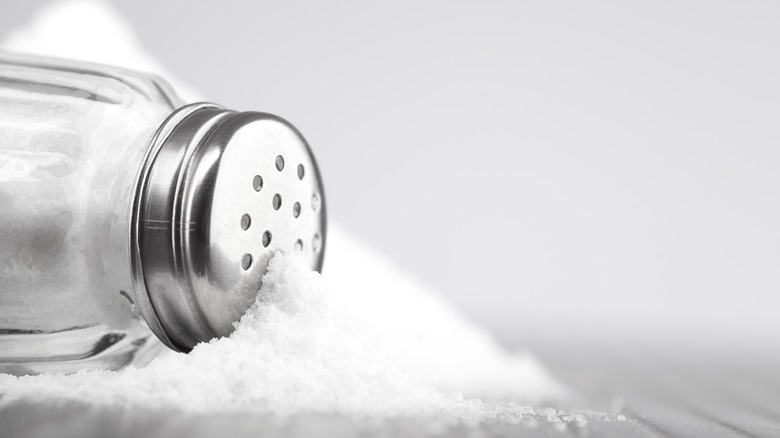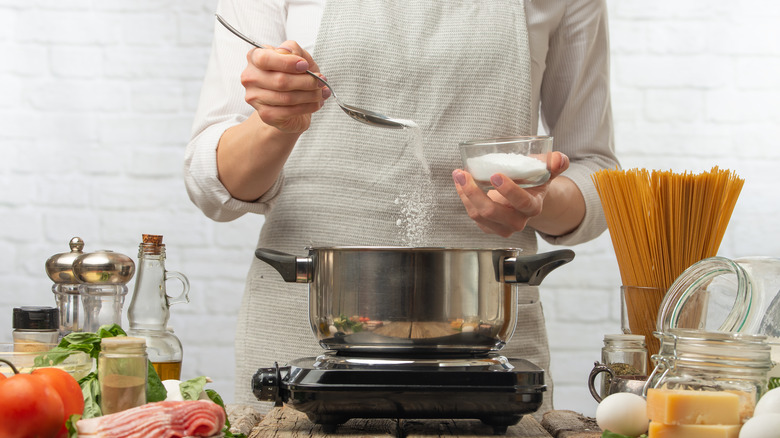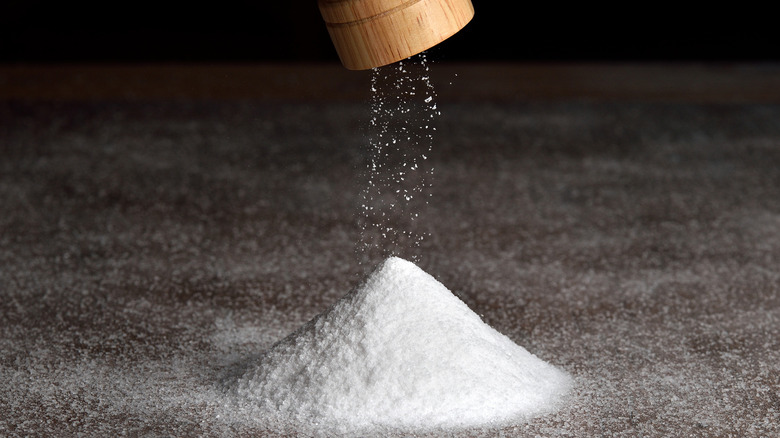Sea Salt Vs Table Salt: What's The Difference?
If you've recently ventured down the spice aisle at your local grocery store, then you've probably seen just how many different kinds of salt are available. From iodized salt and Kosher salt to sea salt and rock salt, there is an assortment to choose from. So you may have found yourself wondering, "What's the difference?" In all reality though, every kind of salt you see is made up of the same most basic material: sodium chloride (via The Kitchn). In addition, all salt comes from sea water in some fashion. But that doesn't mean all salts are created equal.
The primary things that separate different kinds of salt are the size of the crystals, which impacts how they are best used, and the subtle flavors they have. Ultimately, what we think of as sea salt is where sea water has been dried into crystals. Table salt, on the other hand, is dredged up from underground sea caves where old sea water has dried. This is why the minerals found in salts that have not been totally purified give sea salt and table salt different flavors.
Distinct flavors differentiate sea salt from table salt
Salts that are more delicate and often have mineral flavors, such as salt dried from the sea, are typically used as finishing salts (via Martha Stewart). That is because, in dishes with more subtle flavors, the flavor of quality sea salt can be more easily recognized and appreciated (via The Kitchn). Just for that reason, sea salt is a wonderful way to finish off such dishes with the final seasoning.
Table salt does not have the same naturally-occurring minerals that add subtle flavor to dishes like sea salt. The Kitchn explains that the uninhibited flavor of table salt is just one difference that separates it from sea salt. Because table salt has a simpler, saltier flavor that is less complex than sea salt, it is great for cooking with. So reach for this type of salt when you need to salt your pasta water or produce to draw out water.
The crystal sizes of the salts determine their uses
But that isn't the only reason sea salt is used as a finishing salt. The size of the crystals often determines how the different kinds of salt are used (via The Kitchn).
Table salt tends to be finer while sea salt tends to be coarser. Though there are finely ground sea salt that can be used as table salt, mined salt tends to be better for seasoning dishes as they cook because of its saltiness and pure flavor. The actual sodium level of both sea salt and table salt can be measured in the same quantities, but the larger crystals of sea salt mean that it would take more of it to get the same salinity of fine table salt (via Mayo Clinic Health System). The smaller crystals of table salt are also easier for foods to absorb while cooking.
So, sea salt is best used for finishing dishes while table salt is the better choice for seasoning as you cook.


